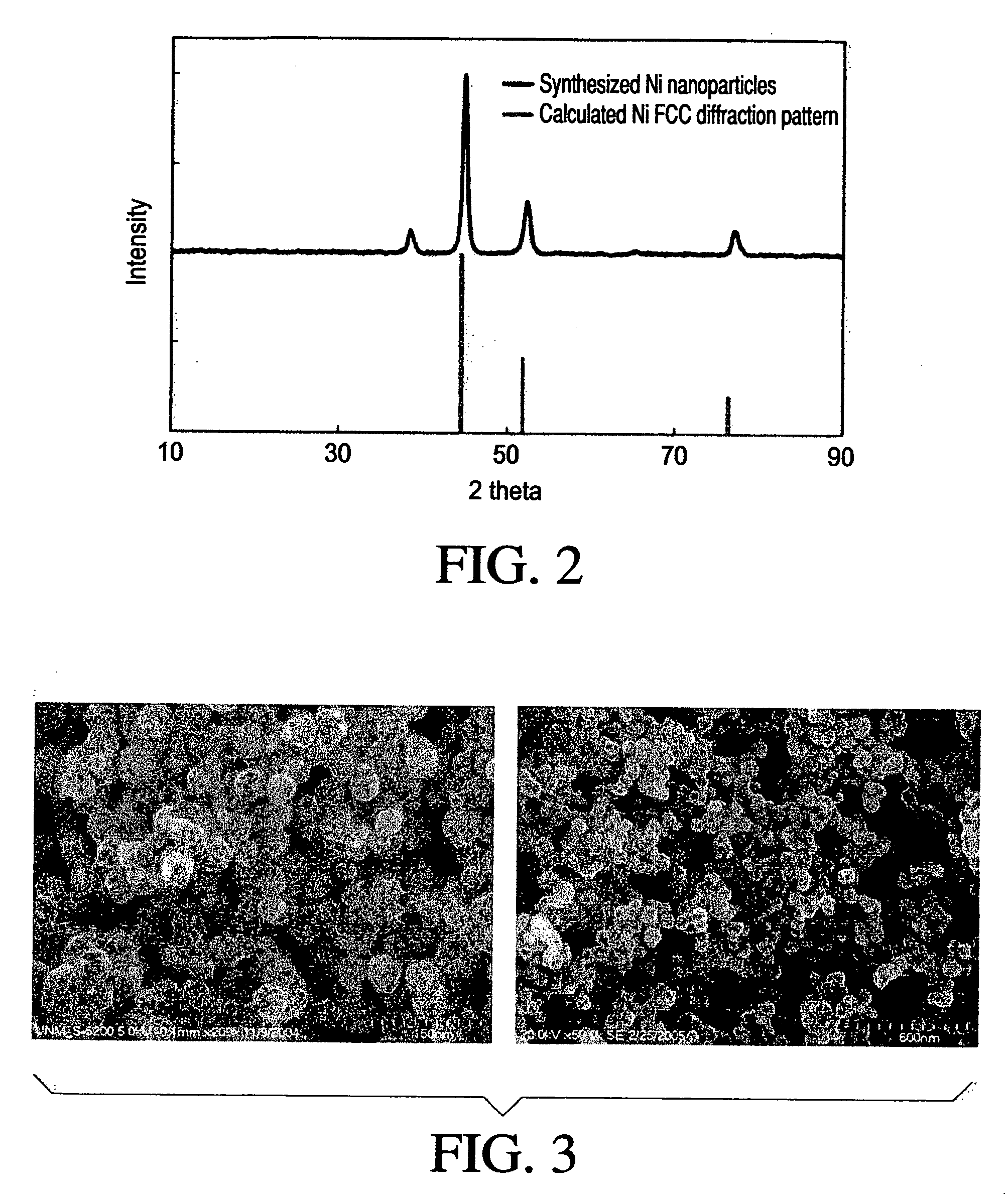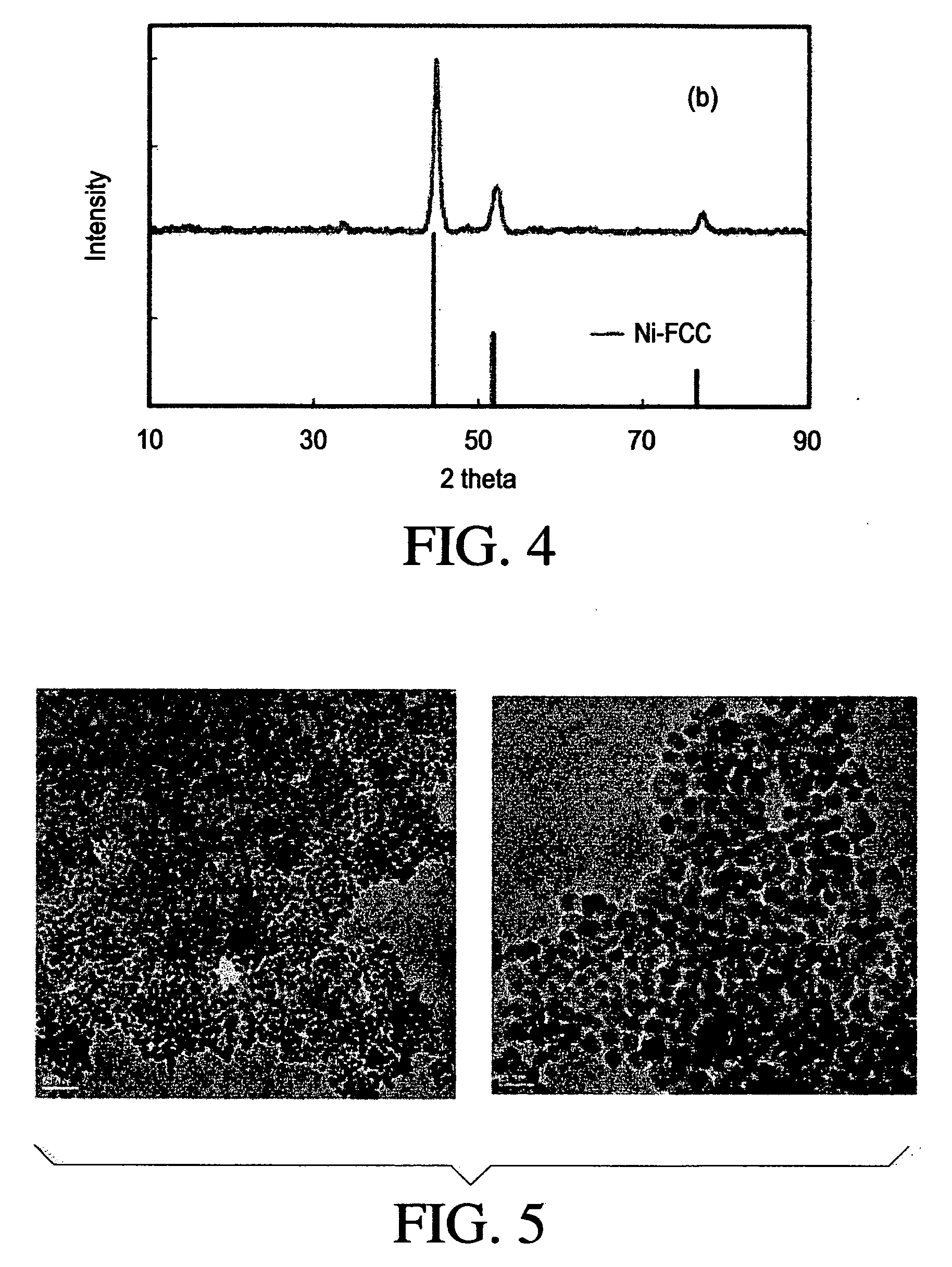Production of metal nanoparticles from precursors having low reduction potentials
- Summary
- Abstract
- Description
- Claims
- Application Information
AI Technical Summary
Benefits of technology
Problems solved by technology
Method used
Image
Examples
example 1
Ag Nucleated Ni Nanoparticles
[0120]5.2 g of Ni-acetate tetrahydrate was completely dissolved in 100 g of propylene glycol at 60° C. and the solution was cooled down to room temperature. 0.2 g of silver nitrate in ethylene glycol solution (8.5 wt %) was added into the transparent green precursor solution at the room temperature while stirring vigorously. 30 g of sodium hydroxide / water solution (1 M) was also added next under the same condition. Then the reaction temperature was set to 180° C. The solution was kept boiling until water and volatile organics were distilled off. PVP in propylene glycol solution was added at 1600. The reaction was boiled until the solution color turned black and kept heating at the reaction temperature for 1 hour after the color change. The final product was precipitated by adding acetone and separated from the solution by centrifugation. The precipitate was washed several times with ethanol and water.
[0121]In order to confirm Ni FCC phase formation, X-ra...
example 2
Pd Nucleated Ni Nanoparticles
[0122]5.1 g of Ni-acetate tetrahydrate was completely dissolved in 100 g of propylene glycol at 60° C. and the solution was cooled down to room temperature. 15 g of sodium hydroxide / water solution (1 M) was added into the transparent green precursor solution at the room temperature while stirring vigorously. Then the reaction temperature was set to 180° C. The solution was kept boiling until water and volatile organics were distilled off. PVP in propylene glycol solution was added at 160°. 11.3 g of Pd-acetate solution in dichloromethane (4.2 wt %) was added slowly into the reaction solution. The reaction was boiled until the solution color turned black and kept heated at the reaction temperature for 1 hour after the color change. The final product was precipitated by addition acetone and separated from the solution by centrifugation. The precipitates were washed several times with ethanol and water.
[0123]In order to confirm Ni FCC phase formation, X-ray...
PUM
| Property | Measurement | Unit |
|---|---|---|
| Temperature | aaaaa | aaaaa |
| Temperature | aaaaa | aaaaa |
| Particle size | aaaaa | aaaaa |
Abstract
Description
Claims
Application Information
 Login to View More
Login to View More - R&D
- Intellectual Property
- Life Sciences
- Materials
- Tech Scout
- Unparalleled Data Quality
- Higher Quality Content
- 60% Fewer Hallucinations
Browse by: Latest US Patents, China's latest patents, Technical Efficacy Thesaurus, Application Domain, Technology Topic, Popular Technical Reports.
© 2025 PatSnap. All rights reserved.Legal|Privacy policy|Modern Slavery Act Transparency Statement|Sitemap|About US| Contact US: help@patsnap.com



